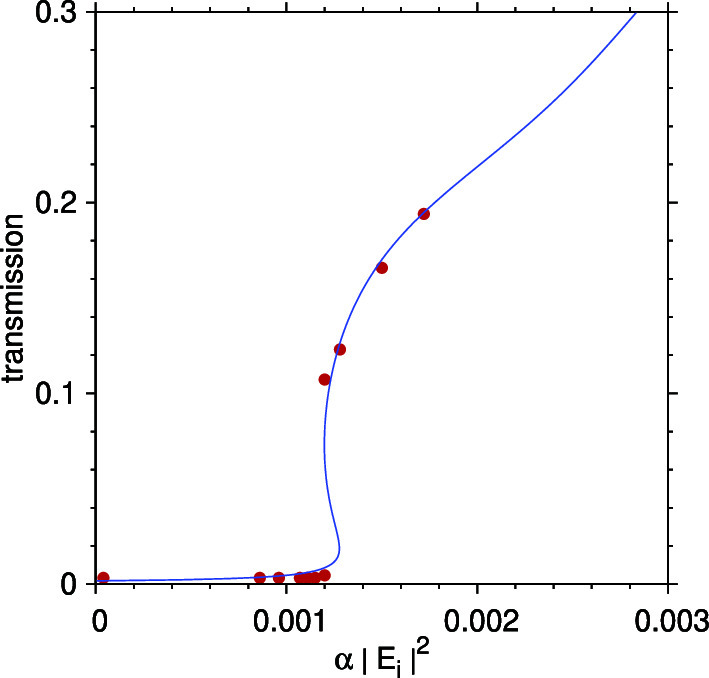https://doi.org/10.1140/epjd/s10053-024-00889-5
Regular Article - Optical Phenomena and Photonics
Saturation and absorption effects on the transmission properties of Kerr-type nonlinear layers
1
Instituto de Física, Universidad de Antioquia UdeA, Calle 70 No. 52-21, Medellín, Colombia
2
Department of Physics, Karlsruhe Institute of Technology, Wolfgang-Gaede-Str. 1, D-76131, Karlsruhe, Germany
Received:
22
February
2024
Accepted:
24
June
2024
Published online:
17
July
2024
The effects of absorption and saturation on soliton states in Kerr-type nonlinear layers are theoretically investigated. In addition to the usual gray and bright soliton structures observed in nonlinear slabs, a flat soliton, i.e., a particular soliton excitation with electric field amplitude independent of the position within the layer, is researched in cases of self-defocusing and self-focusing nonlinearities. Effects caused by the combination of absorption and saturation, such as the shift and extinction of the flat soliton peak, the decrease in the amplitude of the electric field within the nonlinear layer, and the suppression of the multistable behavior of the transmission coefficient in the vicinity of the soliton peaks, are discussed. The present theoretical results are compared and found in good quantitative agreement with previous experimental measurements.
Mathematics Subject Classification: 35Q60 / 74J35 / 78A60
C. A. Betancur-Yepes and J. D. Mazo-Vásquez have contributed equally to this work.
© The Author(s) 2024
 Open Access This article is licensed under a Creative Commons Attribution 4.0 International License, which permits use, sharing, adaptation, distribution and reproduction in any medium or format, as long as you give appropriate credit to the original author(s) and the source, provide a link to the Creative Commons licence, and indicate if changes were made. The images or other third party material in this article are included in the article’s Creative Commons licence, unless indicated otherwise in a credit line to the material. If material is not included in the article’s Creative Commons licence and your intended use is not permitted by statutory regulation or exceeds the permitted use, you will need to obtain permission directly from the copyright holder. To view a copy of this licence, visit http://creativecommons.org/licenses/by/4.0/.
Open Access This article is licensed under a Creative Commons Attribution 4.0 International License, which permits use, sharing, adaptation, distribution and reproduction in any medium or format, as long as you give appropriate credit to the original author(s) and the source, provide a link to the Creative Commons licence, and indicate if changes were made. The images or other third party material in this article are included in the article’s Creative Commons licence, unless indicated otherwise in a credit line to the material. If material is not included in the article’s Creative Commons licence and your intended use is not permitted by statutory regulation or exceeds the permitted use, you will need to obtain permission directly from the copyright holder. To view a copy of this licence, visit http://creativecommons.org/licenses/by/4.0/.





